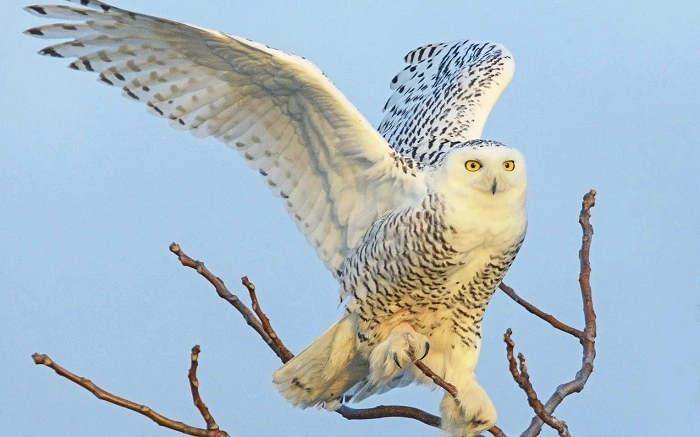When snow blankets the ground and temperatures drop below freezing, many of us wonder: where do birds go when it snows? It’s hard to imagine these small, feathered creatures surviving such harsh conditions without warm homes or coats. Yet, birds have evolved remarkable strategies to handle snowstorms, ice, and freezing winds.
From finding shelter in the unlikeliest places to adjusting their daily behaviors, birds know how to ride out the storm. Let’s explore where birds go when it snows and how they survive even the coldest winter days.
Do All Birds Stay During Snowy Weather?
Not all birds face snowy weather. Many migrate south well before the first snowfall. However, non-migratory birds—like chickadees, cardinals, and woodpeckers—stick around and endure winter’s challenges. These resident species develop clever ways to survive locally instead of flying hundreds or thousands of miles away.
Birds that migrate: Swallows, hummingbirds, warblers, orioles.
Birds that stay: Chickadees, blue jays, nuthatches, sparrows, cardinals, finches, crows.
Shelter: Where Birds Sleep and Hide in Snow
During snowy conditions, birds seek shelter wherever they can find warmth and safety from predators.
Evergreen trees – Dense branches offer protection from snow and wind.
Tree cavities – Woodpeckers and nuthatches often sleep inside tree holes.
Shrubs and hedges – Thick undergrowth acts as a natural windbreaker.
Nest boxes or birdhouses – Artificial shelters become lifesavers in bad weather.
Man-made structures – Birds may hide under decks, in barns, or on windowsills for warmth.
Birds often use the same sleeping spot night after night, especially if it provides reliable protection.
How Birds Stay Warm in the Snow
Surviving snow is about more than finding a hiding spot. Birds also use several physiological and behavioral tactics to stay warm.
Fluffing feathers – Birds puff up their feathers to trap body heat, creating an insulating layer of warm air.
Tucking in body parts – Some birds tuck their bills or feet under their wings to reduce heat loss.
Shivering – Birds shiver to produce heat when temperatures plummet.
Huddling together – Some species, like bluebirds, roost in groups for shared warmth.
They also grow extra downy feathers in winter, adding an extra layer of insulation that keeps body heat in and snow out.
Where Do Birds Find Food When It Snows?
Snow makes it difficult to find seeds, berries, and insects—but birds are adaptable. Some scratch at the ground, while others dig into tree bark or rely on feeders provided by humans.
Winter food sources:
- Dried berries still clinging to shrubs
- Seeds in conifer cones
- Insects hiding in crevices and bark
- Bird feeders stocked with sunflower seeds, suet, and peanuts
Birds spend a lot of their daylight hours looking for food since they need extra energy to maintain body heat in the cold.
How Snow Affects Bird Flight and Movement
You might think birds would have trouble flying in a snowstorm—but most can still fly unless conditions are extreme. During active snowfall or blizzards, birds often stay grounded and conserve energy instead of flying.
Snow-covered branches and icy surfaces can make perching slippery. In response, birds often choose larger, more stable branches or tree trunks to land and rest.
If visibility drops too low, birds rely on familiar landmarks and internal navigation to find their way back to shelter or feeders.
Do Birds Get Cold Feet in the Snow?
Interestingly, birds don’t suffer frostbite in the way humans do. Their feet and legs are adapted to resist cold temperatures through a special blood flow system called countercurrent heat exchange.
This system keeps their core body warm while allowing their feet to stay just above freezing without using too much energy. Many birds will also stand on one leg at a time or tuck both legs up while sitting on their belly to avoid heat loss.
Common Birds You’ll See in Snowy Weather
If you keep an eye out during snowy days, you’ll likely see these hardy birds braving the cold:
- Northern Cardinal – Their bright red feathers pop against white snow.
- Dark-eyed Junco – Often called “snowbirds” for their wintertime activity.
- Black-capped Chickadee – Small but incredibly resilient.
- Downy Woodpecker – Searches tree trunks for hidden insects.
- American Tree Sparrow – Forages in snowy brush for seeds.
- Blue Jay – Loud, colorful, and not afraid of the snow.
These birds rely heavily on food sources and shelter, and many will revisit yards that consistently provide both.
What You Can Do to Help Birds During Snow
If you want to support your local bird population during snowy conditions, here are a few simple steps:
Provide high-energy food – Sunflower seeds, suet, peanuts, and mealworms offer essential fuel.
Keep feeders clear of snow – Use feeder covers or brush them off after snowfall.
Offer fresh water – Use heated birdbaths or break the ice daily.
Place feeders near shelter – Position feeders near evergreen trees or bushes so birds can dart to safety.
Install roosting boxes – These give birds safe spaces to sleep and escape cold winds.
Even small actions can make a big difference, especially during prolonged cold spells.
FAQs
Where do birds sleep during snowstorms?
Birds sleep in dense trees, shrubs, tree cavities, nest boxes, or even tucked into corners of man-made structures.
Do birds fly south right before it snows?
Migratory birds leave long before snowfall. Those who stay have adapted to cold and won’t flee just because of a snowstorm.
How do birds survive extreme cold?
They use strategies like fluffing feathers, shivering, sheltering, and eating high-fat foods to maintain body heat.
Why do I see more birds at feeders when it snows?
Snow covers natural food sources, so feeders become critical for survival and attract large numbers of birds.
Do birds remember where feeders are?
Yes, many birds have excellent memory and will return to reliable feeding sites repeatedly, especially in harsh conditions.




